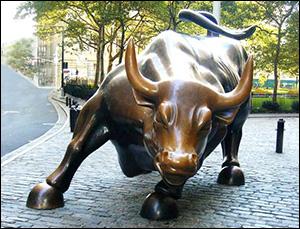 Figuring out how to write ever creative versions of headlines that say the market is hitting a new high is commanding a lot of energy in newsrooms these days. What should be commanding more energy in the newsrooms is writing about the market structure that is underpinning this ‘bull’.
Figuring out how to write ever creative versions of headlines that say the market is hitting a new high is commanding a lot of energy in newsrooms these days. What should be commanding more energy in the newsrooms is writing about the market structure that is underpinning this ‘bull’.
On Friday, TheStreet.comwent with the headline ‘S&P Books Best August Since 2000.’ Bringing up the year 2000 is a bit like bringing up the Hindenburg during an air show. The year 2000 marked the peak in Wall Street’s dot.com bubble, whose bust erased 78 percent of the Nasdaq stock market over the next two and one-half years.
Wiped-out Nasdaq investors were eventually to learn that much of this so-called bull market was a highly orchestrated fraud by some of the biggest firms on Wall Street. The fraud worked like this:
Research analysts at marquee firms like Salomon Smith Barney and Merrill Lynch issued knowingly false research reports urging small investors to buy young, unproven companies while calling the same stocks ‘crap’ or a ‘pig’ in private emails. When new tech or dot.com companies went public, favored big clients at Wall Street firms were instructed when to buy on the opening day of trading at rising prices to make the stock appear to be in high demand. This fraud on the market is called laddering.
This post was published at Wall Street On Parade on September 2, 2014.

 Follow on Twitter
Follow on Twitter
Recent Comments